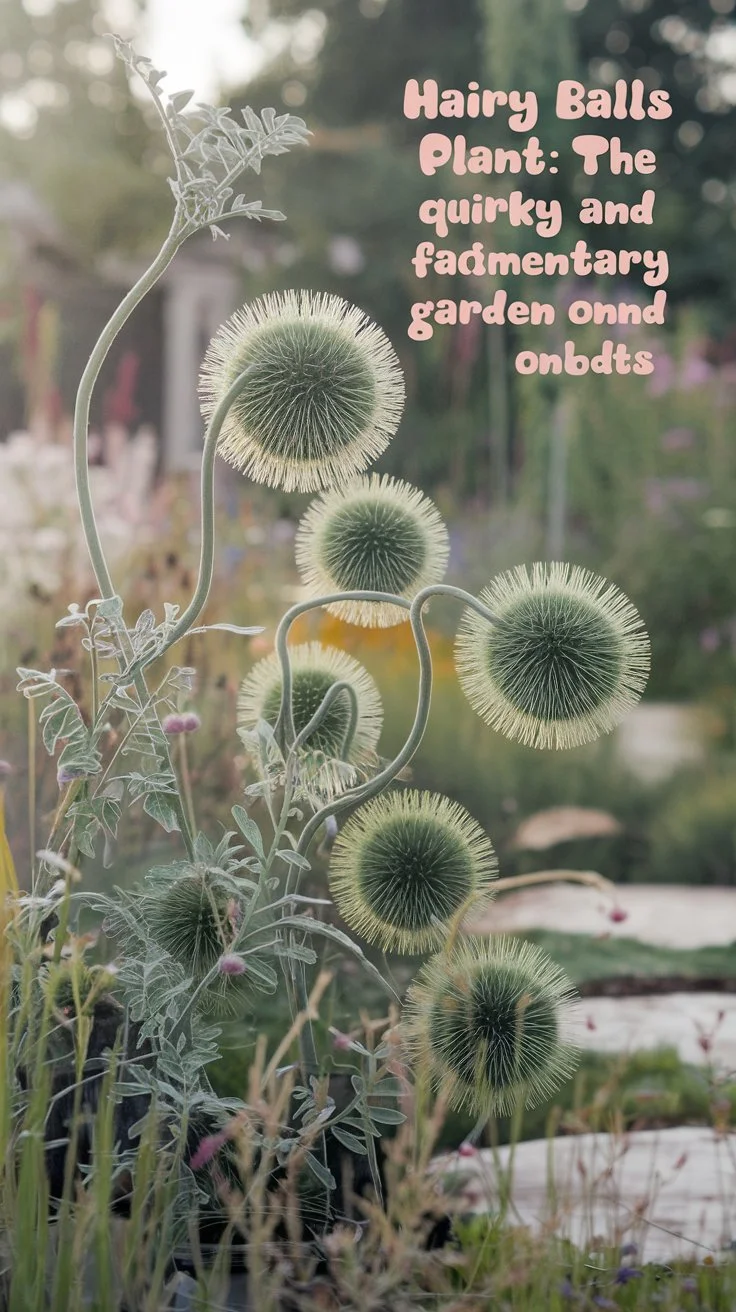Discover the quirky hairy balls plant in 2024. Learn expert tips on growing, caring, and maximizing the beauty of this unique milkweed species in your garden.
The hairy balls plant, scientifically known as Gomphocarpus physocarpus, is a unique and intriguing addition to any garden. Also called balloon plant or milkweed balloon plant, this peculiar species features distinctive inflated seed pods covered in soft hairs, giving it its memorable common name. Despite its unusual appearance, the hairy balls plant is a valuable addition to pollinator gardens and can serve as an interesting conversation starter for plant enthusiasts.
Hello, I’m Ashley Scott, a horticulturist with over 15 years of experience in unusual and native plant cultivation. Today, I’m excited to share my knowledge about the hairy balls plant, a fascinating species that has been gaining attention among gardeners seeking unique additions to their landscapes.
Understanding the Hairy Balls Plant

The hairy balls plant, Gomphocarpus physocarpus, is a member of the milkweed family (Asclepiadaceae). Native to southeast Africa, it has naturalized in many warm regions worldwide. As one of the most unusual butterfly garden plants, it serves a dual purpose of visual interest and ecological benefit.
Key characteristics include:
- Fast-growing perennial reaching 3-6 feet tall
- Large, inflated seed pods covered in soft hairs
- Small, white clustered flowers
- Narrow, lance-shaped leaves
The Missouri Botanical Garden provides an excellent overview of this species, noting its value as both an ornamental and wildlife plant.
Why Choose the Hairy Balls Plant in 2024?
- Unique Visual Appeal: Its distinctive seed pods make it one of the most eye-catching unusual garden plants, perfect for gardeners looking to create conversation pieces.
- Butterfly Attraction: As a milkweed species, it’s one of the best plants for monarch butterflies, providing a crucial food source for their caterpillars.
- Low Maintenance: This drought-tolerant perennial is ideal for those seeking low-maintenance garden ideas, requiring minimal care once established.
- Pollinator Support: Beyond monarchs, it attracts various pollinators, making it an excellent choice for eco-friendly garden designs focused on supporting local ecosystems.
Growing the Hairy Balls Plant

Climate and Hardiness
The hairy balls plant thrives in USDA hardiness zones 8-11. In colder regions, it can be grown as an annual or kept as one of the unique container plants for patios, allowing for indoor protection during winter.
Soil and Sunlight Requirements
- Soil: Well-draining, average to poor soil
- Sunlight: Full sun to partial shade
Planting Tips
- Choose a location with good air circulation to prevent fungal issues
- Sow seeds directly in the garden after the last frost, or start indoors 6-8 weeks before
- Space plants 2-3 feet apart to allow for growth
- Water regularly until established
For container planting, select a pot at least 12 inches deep with adequate drainage holes.
Innovative Care Techniques for 2024
Companion Planting
Pair the hairy balls plant with other native wildflowers to create a diverse and attractive pollinator garden. The National Wildlife Federation offers great resources on native plant gardening.
Natural Pest Control
While generally pest-resistant, aphids can sometimes be an issue. Introduce ladybugs or use a strong water spray to manage infestations, aligning with organic gardening principles.
Seed Saving and Propagation
Collect seeds from dried pods for propagation. This plant’s easy-to-save seeds make it perfect for gardeners interested in seed-saving techniques and sustainable gardening practices.
Maximizing the Plant’s Unique Features
To enhance the visual appeal of your hairy balls plant:
- Plant in groups for a more dramatic effect
- Use as a background plant in butterfly gardens
- Incorporate into cut flower arrangements for unique texture
- Allow seed pods to dry on the plant for winter interest
Harvesting and Uses
While primarily grown for ornamental purposes, the hairy balls plant has several uses:
- Dried seed pods for floral arrangements
- Fibers from the stem can be used for cordage (in survival situations)
- Seeds can be used in crafting projects
Note: All parts of the plant contain toxic cardiac glycosides and should not be ingested.
Troubleshooting Common Issues
- Yellowing Leaves: Often indicates overwatering; ensure well-draining soil
- Lack of Seed Pods: May be due to insufficient pollination; plant more pollinator-friendly species nearby
- Fungal Issues: Improve air circulation and avoid overhead watering
The hairy balls plant offers a unique and fascinating addition to any garden, particularly for those looking to support pollinators while adding visual interest. Its low-maintenance nature, coupled with its ecological benefits, makes it an excellent choice for gardeners in 2024 who are seeking to create diverse, sustainable landscapes. By incorporating this quirky plant into your garden, you’re not only adding a conversation piece but also contributing to the well-being of important pollinator species.
For more gardening tips and plant care guides, visit usagardenhub.com




